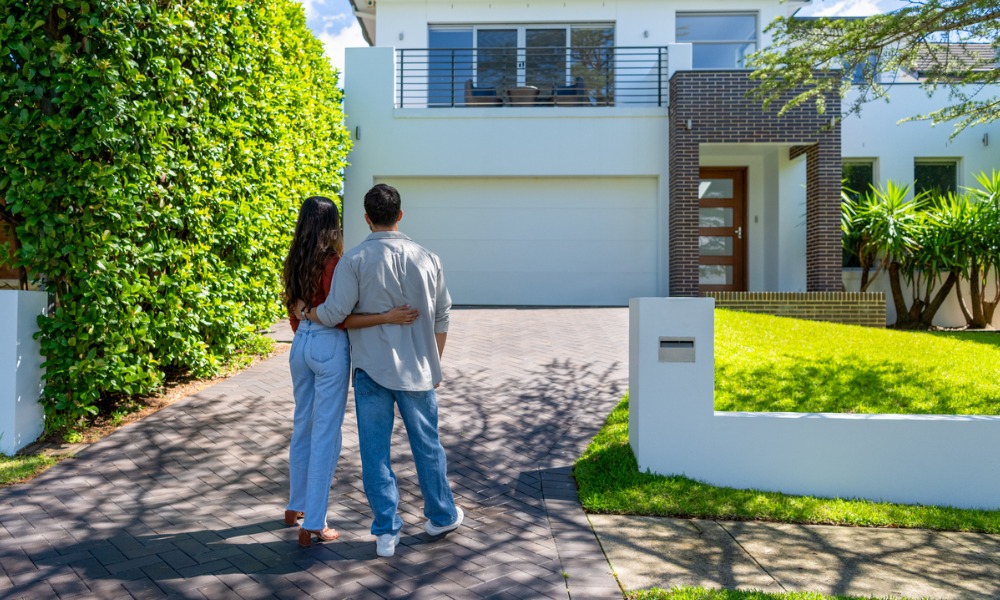Finding it hard to secure a property with the common housing programs? You might want to go for a rent-to-own scheme. Read on to know more

- What is a rent-to-own scheme in Australia?
- How does a rent-to-own scheme work?
- Criteria needed for a rent-to-own scheme
- Is it expensive to apply for a rent-to-own scheme?
- Where can I find rent-to-own properties in Australia?
- Advantages of rent-to-own schemes
- Disadvantages of rent-to-own schemes
- Key considerations before applying for a rent-to-own scheme
- Should Australians apply for a rent-to-own scheme?
Updated XX June 2024
Most housing programs in Australia offer good deals but come with difficult requirements. These cause Australians to turn down opportunities in homeownership. Interest rates on mortgages are often leaning on the expensive side, creating more stumbling blocks for first time buyers.
With these challenges, it should not come as a shock that Australians are getting more creative when they are looking to purchase a house. Property buyers are now exploring nontraditional and unique ways to buy their first property or move to a new one. This could mean looking at different financing strategies or uncommon home-buying approaches. One of these is the rent-to-own (or rent-to-buy) scheme.
In this article, Mortgage Professional Australia will discuss this housing program, its advantages, disadvantages, and other important details. If you have clients who are interested to learn how rent-to-own schemes work, share this with them!
What is a rent-to-own scheme in Australia?
A rent-to-own scheme is relatively straightforward. In this type of housing program, a property buyer enters a rental contract with the homeowner or rent-to-own provider. After that, the buyer commits to paying the rent for a specific amount of time, usually three to five years.
During the rental period, a portion of the monthly payment is set aside and later applied towards the possible purchase of the house. This allows the renter to build up equity in the property, effectively saving money over time for the initial deposit of a mortgage loan in the future.
Once the rental contract runs its course, the renter will pay the remaining balance. The end of the rental period should be decided by the property owner and renter beforehand.
Watch this quick video on what a rent-to-own scheme is:
Difference from other housing loans
What rent-to-own schemes offer is flexibility, often lacking in traditional home buying. The renters will have the option to buy the property at a pre-determined price, but only at the end of the rental period.
This can provide a sense of control for buyers, who can use the intervening years to improve their financial standing and secure more favorable mortgage terms.
Check out our article on other home loans for first time buyers in Australia.
How does a rent-to-own scheme work?
Since the buyer will initially pay rental fees, it allows them to start with lower costs while still climbing towards homeownership. The process to a rent-to-own scheme often follows these steps:
Step 1: find a home you like
Step 2: research the property to ensure it is a good investment
Step 3: meet the owner of the property and make sure they are financially stable
Step 4: draft a contract after taking advice from a solicitor
Step 5: sign the rental agreement
Step 6: pay the rental fee and option fee
Step 7: buy the house after a pre-determined amount of time (three to five years)
Criteria needed for a rent-to-own scheme
The criteria needed when applying for a rent-to-own scheme are the same when applying for rent. The buyer or renter must:
- be over 18 years old
- be an Australian citizen or a permanent resident at the time of the sale
- be married or in a de facto relationship with an Australian citizen or a permanent resident at the time of the sale
- have valid government-issued identification documents (ID)
- have proof of income such as bank statements, tax return or tax notice of assessment, pay slips
- have a certain amount of income to pay rental fees
- have a credit score of 660 or above

Is it expensive to apply for a rent-to-own scheme?
As a renter, you are required to pay a non-refundable fee upfront, which holds the option for you to buy the home later. This fee, also called the option fee, is generally negotiable but can reach as high as 5% of the cost of the initial rent-to-own agreement.
If the renter decides against purchasing the home, the option fee is lost. If the renter agrees to buy the home, the option fee is discounted from the future downpayment.
Depending on the property’s value, the other costs of a rent-to-own scheme can vary widely. Here are some of the payments that you will have to cover aside from the option fee:
- a non-refundable deposit that's included in the overall costs of the house
- set up fee for the rent-to-own company
- payments that do not go towards the final price of the house
- the homeowners' fees
- price of moving house
- additional expenses
Where can I find rent-to-own properties in Australia?
You can find rent-to-own properties in Australia in these locations:
- Canberra
- Greater metropolitan Sydney
- Newcastle or Central Coast
- Greater Brisbane
- Wollongong
- Tweed
- Gold Coast
- Townsville
- other places in Western Australia

Advantages of rent-to-own schemes
Often, it is the first time buyers who go for a rent-to-own scheme due to its easier payment terms. This scheme can make home ownership more accessible for those who might not be able to afford a traditional mortgage upfront.
Another key advantage of rent-to-own schemes in Australia is that they provide an alternative path to homeownership. This is important for those who might not qualify for a conventional mortgage due to factors such as:
- good credit score but not enough to secure a mortgage
- low savings despite having a stable job
- insufficient deposit to apply for a home loan
By allowing these buyers to “test drive” the property and gradually accumulate equity, rent-to-own schemes can help bridge the gap between renting and outright homeownership.
Another perk is the protection that this scheme provides for the renter or buyer against real estate price hikes in the future. The price of the property is set at the start of the agreement.
Rent-to-own schemes can be an option for foreigners or non-residents who want to purchase a property. The timeframe provided by the scheme is beneficial since these foreign nationals would need to acquire permanent residency or permission before they can purchase property in Australia.
Disadvantages of rent-to-own schemes
Despite its flexibility on payment terms, rent-to-own schemes are not popular in Australia. In many cases, a third party or developer will offer a house for sale with a rent-to-own contract included. The rental fees that you might agree to with the property owner are often way above the real estate market rate.
In lieu of the potential buy, you could also be on the hook for a premium. It is also possible for the ultimate price of the property to be higher when you are ready to buy.
Since rent-to-own schemes typically attract those unable to purchase a home in a more traditional way, renters are vulnerable to predatory vendors. This means that unlike other housing options, this scheme has more risks.
And while it might sound like a great way for those who are yet to afford a house, a report from Consumer Action was not able to point out one rent-to-own success story. The South Australia government also warned against the practice.
It is critical that renters understand these schemes come with many catches. You have zero ownership rights until you make the last payment on the home. You could also easily lose all the money you had paid if you default at any point during the contract.
That is why it is best to consult a legal expert because the risks are quite high. There can also be little legal recourse in the event the deal goes sour. When in doubt:
- know your rights
- weigh your options
- consider the cost
To learn more about the risks involved in rent-to-own or rent-to-buy schemes, watch this video:
If the rent-to-own option is not for you, take a look at the Help to Buy scheme. You would only need to pay 2% deposit to get started!
Key considerations before applying for a rent-to-own scheme
If you are considering a rent-to-own scheme, you should check the details of the contract and seek legal advice. Among the questions you need to ask before pursuing a rent-to-own scheme are:
- Is the rent reasonable?
- Will I be in the position to purchase in 5 years’ time?
- Is the home priced appropriately in the market?
- If the buyer or the company cannot settle, are there protections in place?
Should Australians apply for a rent-to-own scheme?
Rent-to-own schemes are new to the market and are not available throughout Australia. In the Southern parts of the country, it is solely the Australian government's housing agency that is allowed to offer rent-to-own options. It is also unlawful for some companies to offer certain rent-to-own contracts in Victoria. Does this mean that Australians should not apply for this scheme? Not entirely.
Despite the risks, a rent-to-own scheme is still an alternative for those who are having a hard time purchasing a house through the conventional housing initiatives. Even when some are outright calling it a scam without firsthand experience, there are others who weigh the facts before judging. To help you further, read this article on whether getting a rent-to-own home is worth it.
If you are confident that a rent-to-own scheme is for you, do your research and ask the right questions. Find people that can help you fully understand its upsides and downsides. Remember, in every financial decision that you make, there will always be risks. You need to learn how to manage them and minimise any monetary losses as much as possible.
Focus on the things that you can control like choosing an authorised rent-to-own company and not rushing into a decision. By the end of your rental period, a good mortgage broker and mortgage lender can help you with your purchase. Check out our Best in Mortgage page to see the best professionals in the mortgage industry.
Do you agree that a rent-to-own scheme is a great alternative to conventional housing loans? What are your thoughts about the risks posed by this scheme? Share your insights in the comments below



